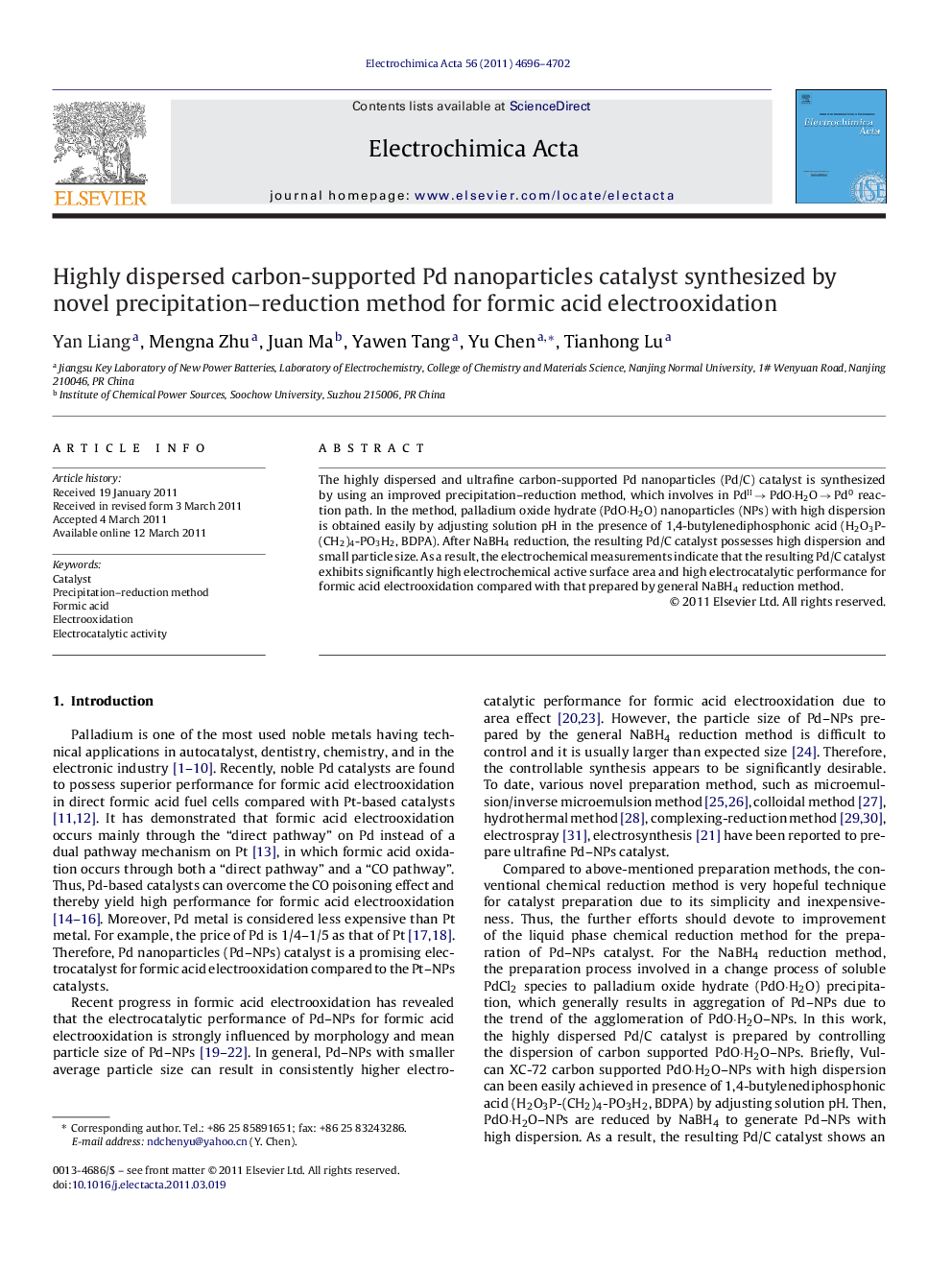| Article ID | Journal | Published Year | Pages | File Type |
|---|---|---|---|---|
| 189894 | Electrochimica Acta | 2011 | 7 Pages |
The highly dispersed and ultrafine carbon-supported Pd nanoparticles (Pd/C) catalyst is synthesized by using an improved precipitation–reduction method, which involves in PdII → PdO·H2O → Pd0 reaction path. In the method, palladium oxide hydrate (PdO·H2O) nanoparticles (NPs) with high dispersion is obtained easily by adjusting solution pH in the presence of 1,4-butylenediphosphonic acid (H2O3P-(CH2)4-PO3H2, BDPA). After NaBH4 reduction, the resulting Pd/C catalyst possesses high dispersion and small particle size. As a result, the electrochemical measurements indicate that the resulting Pd/C catalyst exhibits significantly high electrochemical active surface area and high electrocatalytic performance for formic acid electrooxidation compared with that prepared by general NaBH4 reduction method.
► The dispersion of PdO·H2O nanoparticles on the carbon surface is the vital premise for preparation of Pd/C catalyst with high dispersion. ► PdO·H2O nanoparticles with high dispersion and small particle size can easily be obtained in the presence of 1,4-butylenediphosphonic acid (H2O3P-(CH2)4-PO3H2), which results in the formation of Pd/C catalyst with high dispersion. ► Electrochemical measurements indicate that the Pd/C catalyst prepared by the precipitation−reduction method exhibits high electrochemical active surface area and electrocatalytic performance for formic acid electrooxidation.
